|
G4M1 Model 11 Betty
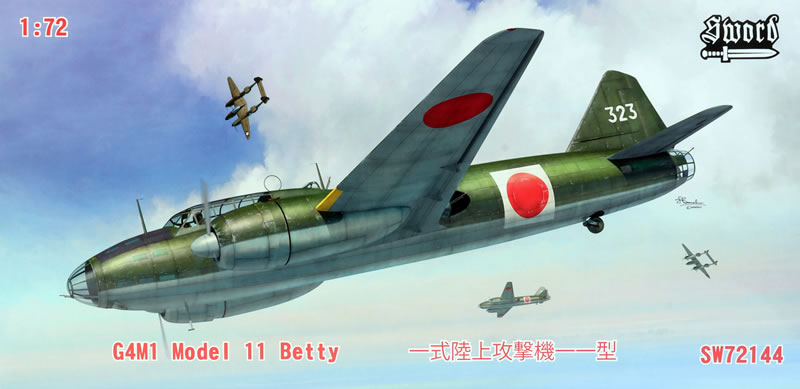
Sword, 1/72 scale
S
u m m a r y |
| Description and Catalogue Number: |
Sword Kit No. SW72144 – G4M1 Model 11 Betty |
| Scale: |
1/72 |
| Contents and Media: |
87 parts in grey plastic, 31 parts in clear; two resin parts; decals for two marking options. |
| Price: |
Available online from:
|
| Review Type: |
FirstLook |
| Advantages: |
High quality moulding; good level of detail; fine recessed surface textures. |
| Disadvantages: |
No harness straps or decal instruments; some tricky clear to clear gluing required; some raised ejector circles.. |
| Conclusion: |
Sword's kits are limited run but the quality of moulding, the level of detail and the finesse of surface textures would challenge some mainstream injection moulding model companies.
Sword's 1/72 scale G4M1 model 11 Betty is a relaitively straightforward and very nice limited run kit. Take your time with parts cleanup and alignment and you will have an impressive result. |
Reviewed by Brett Green
Background
The Mitsubishi G4M was a twin-engine, land-based medium bomber formerly manufactured by the Mitsubishi Aircraft Company and operated by the Imperial Japanese Navy from 1940 to 1945.
Its official designation is Mitsubishi Navy Type 1 attack bomb and it was commonly referred to by Japanese Navy pilots as Hamaki (cigar) due to the cylindrical shape of its fuselage and its penchant for igniting after a hit. The Allied reporting name was "Betty".
Designed to a strict specification to succeed the Mitsubishi G3M already in service, the G4M boasted very good performance and excellent range and was considered the best land-based naval bomber at the time. This was achieved by its structural lightness and an almost total lack of protection for the crew, with no armour plating or self-sealing fuel tanks.
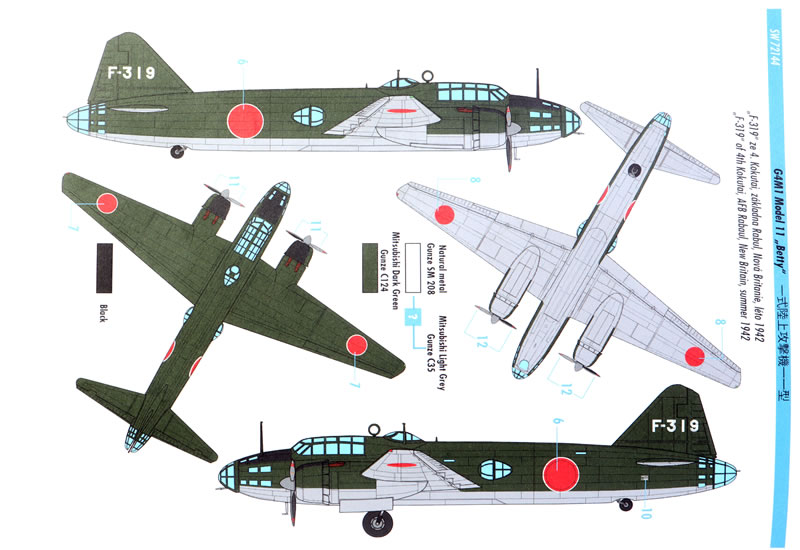
The G4M was officially adopted on 2 April 1941 but the aforementioned problems would prove to be a severe drawback, often suffering heavy losses; Allied fighter pilots nicknamed the G4M "The Flying Lighter" as it was extremely prone to ignition after a few hits. It was not until later variants of the G4M2 and G4M3 that self-sealing fuel tanks, armour protection for the crew and better defensive armament was installed.
Nevertheless, the G4M would become the Navy's primary land-based bomber. It was the most widely produced and most famous bomber operated by the Japanese during World War II and it served in nearly all battles during the Pacific War.
The aircraft is also known for being the mothership that carried the Yokosuka MXY-7 Ohka, a purpose-built anti-ship suicide weapon during the final years of the war.
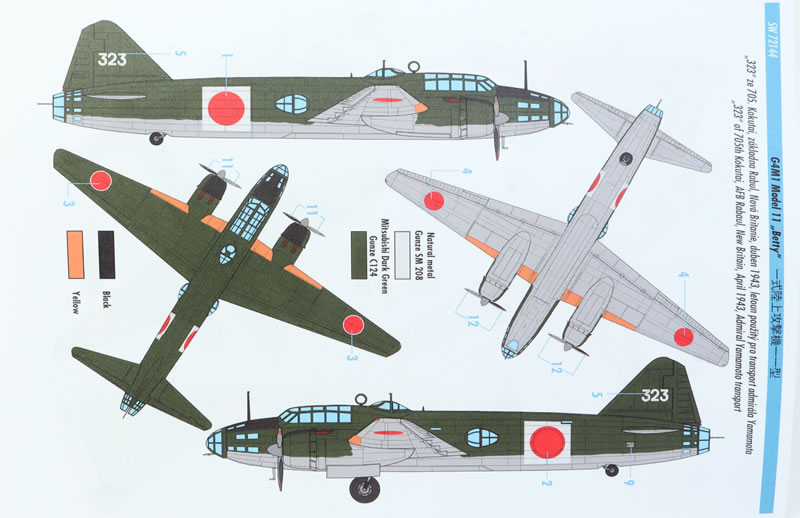
The G4M1 was the first bomber model of series, with 1,140 kW (1,530 hp) Mitsubishi MK4A "Kasei" Model 11 engines driving three-blade propellers.
Of the 2,435 G4Ms produced, only one survives and is under restoration. Mr Harada is restoring this aircraft at the Kuwaguchiko Motor Museum. The fuselage complete, and work has started on the wings.
Betty in 1/72 scale
Hasegawa released their original G4M1 Betty way back in 1969.
This was replaced with an all-new 1/72 scale G4M2 Betty in 1996, with variations and reboxings appearing irregularly until recently.
By all accounts the 1996+ kits are very nice.
Sword is a limited-run model company from the Czech Republic that mainly focuses on 1/72 scale kits.
After 26 years we are getting an all-new Betty bomber.
Sword's 1/72 scale G4M1 Model 11 Betty comprises 87 parts in grey plastic, 31 parts in clear plastic, two resin parts and decals for two marking options.
The grey plastic parts for each kit are moulded onto three sprues. The size of attachment points vary, with the majow parts being fairly thick and detail parts being fine.
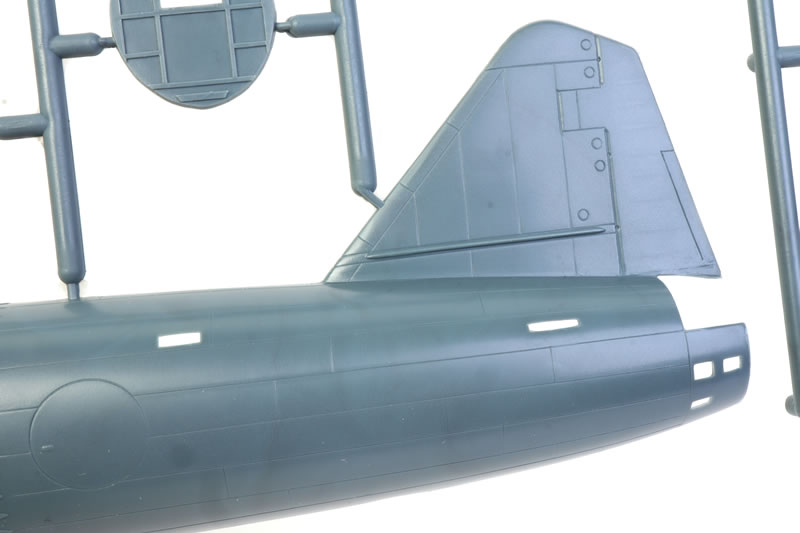
Being a limited run kit, there are none of the little luxuries such as locating pins and tabs, so take time when aligning and gluing the plastic parts. There are a few raised ejector pin circles that look like they will interfere with wing parts joining (especially on the inside of tail planes), so you'll need to clean these up prior to assembly.
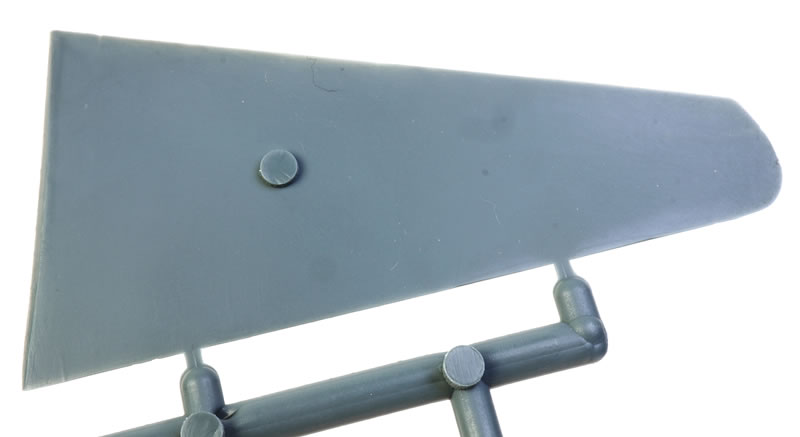
Surface textures, including fine recessed panel lines, fish scale reinforcements on the fuselage and very subtle stretched fabric effect on control surfaces, are all well done.
Raised structural detail is moulded onto the inside of the fuselage. There are a few hard-to-remove raised ejector pin marks but these will be pretty much hidden when the fuselage halves are closed.
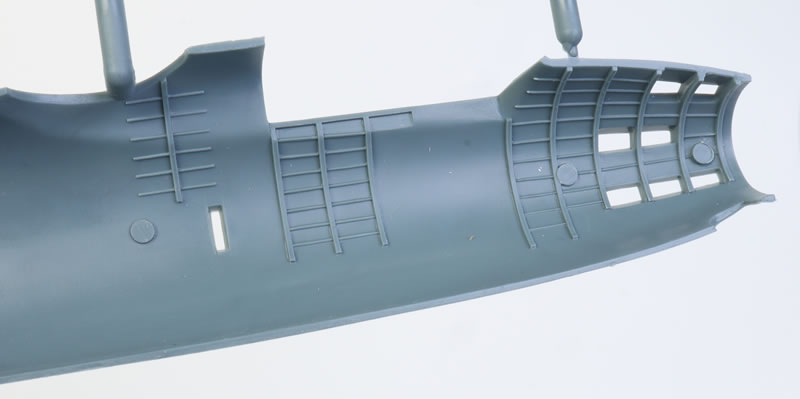
The cockpit is made up from the floor section, rear bulkhead, three seats, stools and jump seat, instrument panel, control columns, bombsight and more. Moulding is crisp and detail is good here. It should pop out with careful painting and weathering.
The instrument panel is a single plastic part with recessed circles and raised switches etc. It would have been nice to have an overlay decal with instrument dial detail but you're on your own there.
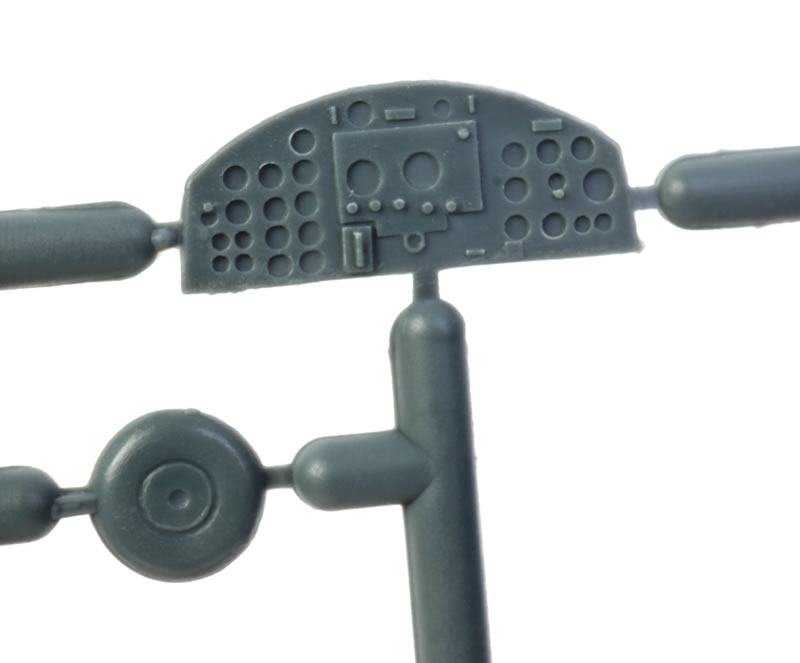
You'll need to supply your own harness straps too.
Resin parts are supplied for the engines. These feature fine detail including push rods cast in place - pretty impressive.
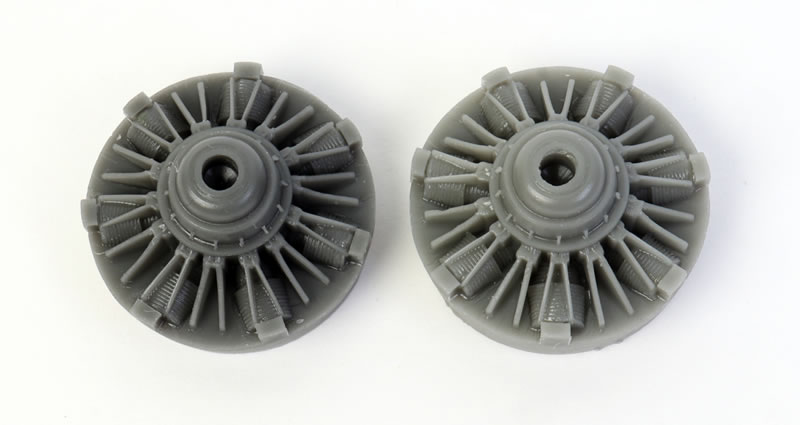
The windscreen is moulded as a single part. A bunch of small individual windows are supplied for the forward fuselage, but I will probably form my own windows using Kristal Klear or something similar.
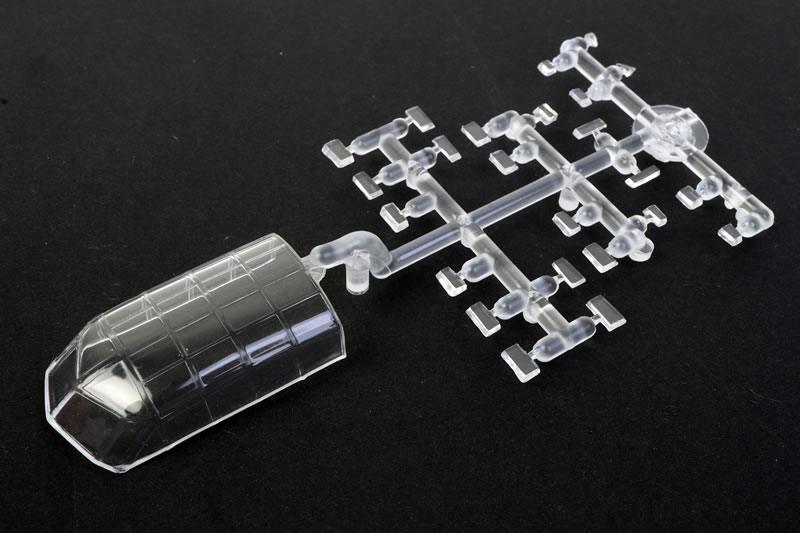
There will be a couple of tricky places where clear parts are to be glued together.
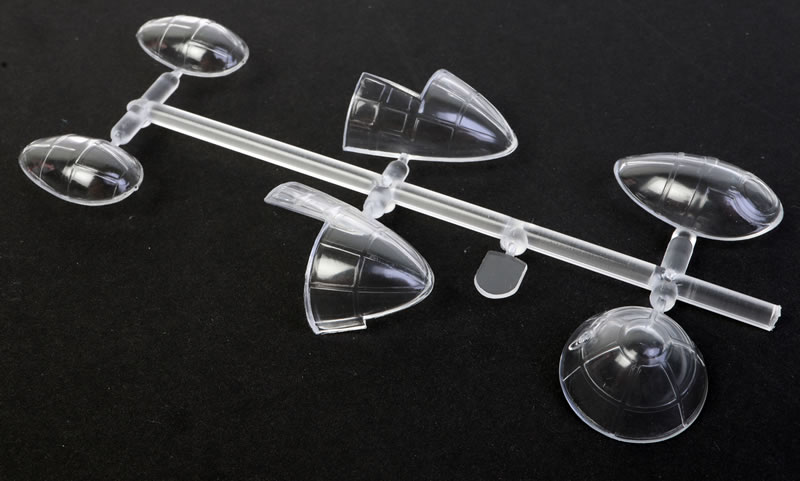
Canopy and window masks are included. This is a real blessing considering the large number of small windows.
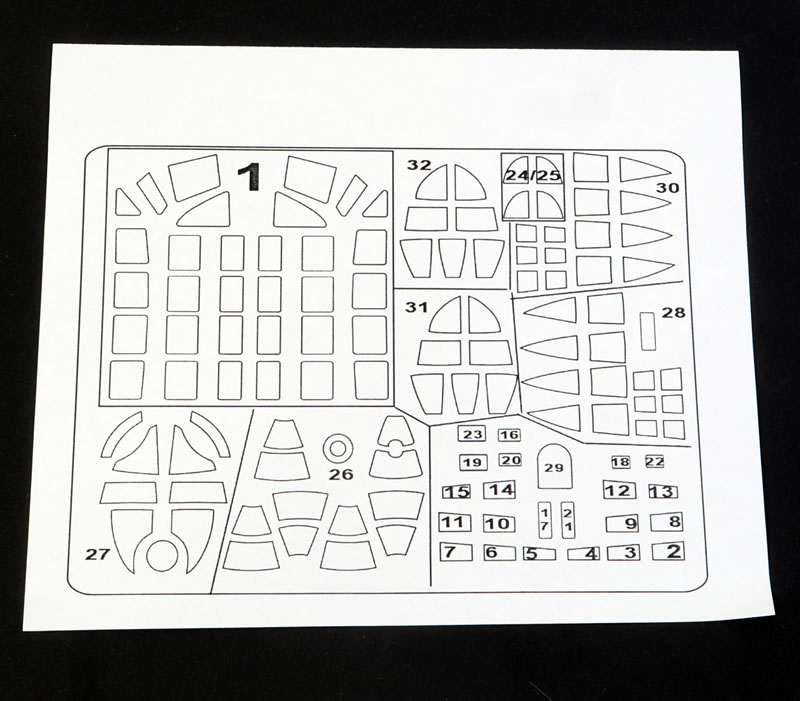
These are the Kabuki self-adhesive flexible paper style of masks - my favourite!
Markings
Markings are provided for two options. Both are finnished in IJN green and grey.
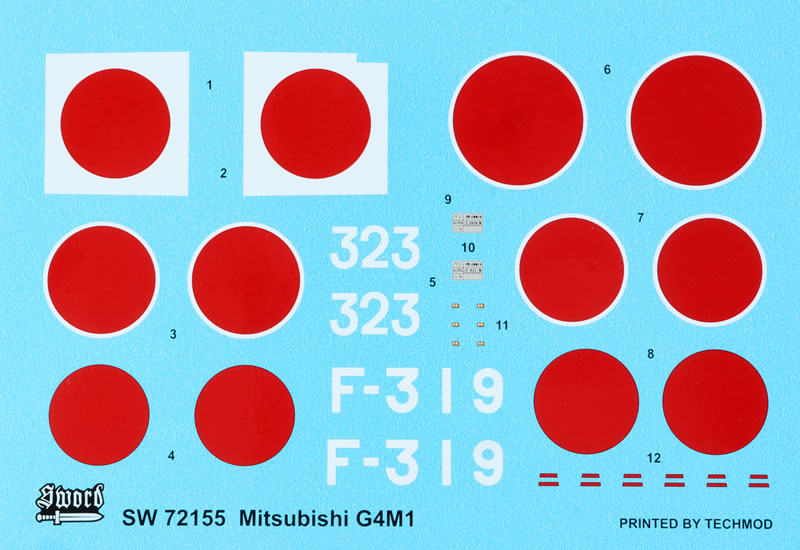
Decals are printed by Techmodand are in good register.
Sword's kits are limited run but the quality of moulding, the level of detail and the finesse of surface textures would challenge some mainstream injection moulding model companies.
Sword's 1/72 scale G4M1 model 11 Betty is a relaitively straightforward and very nice limited run kit. Take your time with parts cleanup and alignment and you will have an impressive result.
Thanks to Sword Models for the review samples.
Text and Images Copyright © 2022 by Brett Green
Page Created 24 November, 2022
Last updated
24 November, 2022
Back to HyperScale Main Page |
